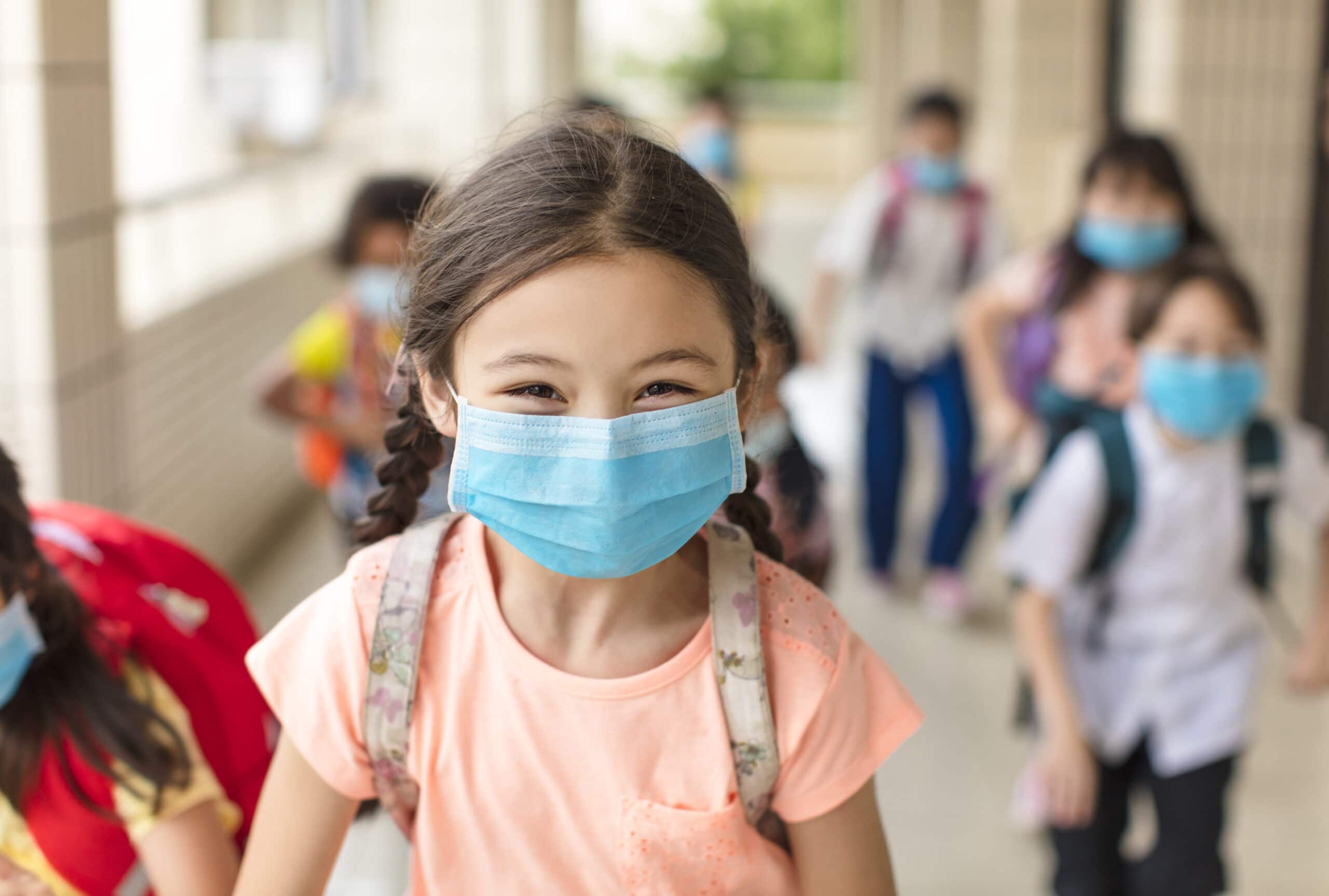Research about Mask Mandates in Arkansas Schools Published in CDC’s Morbidity and Mortality Weekly Report
| LITTLE ROCK — The Centers for Disease Control and Prevention’s latest Morbidity and Mortality Weekly Report (MMWR) contains research on mask mandates in Arkansas school districts and how the mandates helped to limit COVID-19 at the schools.
Researchers from the University of Arkansas for Medical Sciences’ (UAMS) Fay W. Boozman College of Public Health and College of Medicine teamed up with the Arkansas Department of Health (ADH), Arkansas Center for Health Improvement (ACHI) and the Centers for Disease Control and Prevention (CDC) on the project.
“This important and well-conducted study involving Arkansas schools amply demonstrates the efficacy of facemasks during viral surges,” said Mark Williams, Ph.D., dean of the UAMS College of Public Health.
The team of researchers focused primarily on COVID-19 cases among K–12 students and staff members in Arkansas public school districts with varying mask policies. The investigation began in August 2021 and concluded in mid-October.
ACHI President and CEO Joe Thompson, M.D., MPH, explained how this project displays why joint efforts are important when researching a public health crisis.
“Throughout the pandemic, ACHI helped inform local decision makers, including the policymakers, school leaders and parents who enabled this study,” he said. “Future emergency response planning must include data and communication strategies to support these local decision makers.”
The goal of the MMWR is to promote important, fact-based, objective information related to public health issues. The research selected for publishing in the MMWR are typically reports submitted to the CDC from a state health department.
Austin Porter, Dr.PH., MPH, an assistant professor of Health Policy and Management for the UAMS College of Public Health and deputy chief science officer at ADH, was one of the researchers on the project.
The CDC publishing the discoveries in the MMWR shows the depth and importance of the report, he said.
“We wanted to provide real data of the effectiveness of mask mandates in school and how they can reduce the spread of COVID-19,” Porter said. “The MMWR is prestigious because it’s the weekly publication for the CDC. When you have something published in it — you get a lot of attention from public health practitioners, legislators and the general public. The CDC is very selective as to what they publish.”
When the coalition first began to gather and research the data, the goal was to get correct information to Arkansans about mask mandates in schools. Additionally, many of Arkansas’ youth were still not eligible to get a COVID-19 vaccine.
During the study, Arkansas’ COVID-19 community transmission levels declined while vaccination coverage increased. Among the 233 school districts included in the study, 30%, 21%, and 48% had full, partial or no mask policies, respectively. Among 26 districts that switched from a no mask policy to either a full or partial policy, COVID-19 cases were higher than community rates during the period with no mask policy. However, when districts implemented a mask policy, the COVID-19 rates among students and staff decreased.
“We had some school districts in Arkansas going with a mask mandate while others did not,” Porter said. “It all allowed for a natural experiment to occur and to see if there’s a story to tell. Once we got the data and compared the numbers, it made perfect sense to write an article about masks helping to reduce the spread of COVID-19 at schools. We have the data to validate that mask mandates in schools work to stop the spread of COVID-19.”
UAMS is the state’s only health sciences university, with colleges of Medicine, Nursing, Pharmacy, Health Professions and Public Health; a graduate school; a hospital; a main campus in Little Rock; a Northwest Arkansas regional campus in Fayetteville; a statewide network of regional campuses; and eight institutes: the Winthrop P. Rockefeller Cancer Institute, Jackson T. Stephens Spine & Neurosciences Institute, Harvey & Bernice Jones Eye Institute, Psychiatric Research Institute, Donald W. Reynolds Institute on Aging, Translational Research Institute, Institute for Digital Health & Innovation and the Institute for Community Health Innovation. UAMS includes UAMS Health, a statewide health system that encompasses all of UAMS’ clinical enterprise. UAMS is the only adult Level 1 trauma center in the state. UAMS has 3,485 students, 915 medical residents and fellows, and seven dental residents. It is the state’s largest public employer with more than 11,000 employees, including 1,200 physicians who provide care to patients at UAMS, its regional campuses, Arkansas Children’s, the VA Medical Center and Baptist Health. Visit www.uams.edu or uamshealth.com. Find us on Facebook, X (formerly Twitter), YouTube or Instagram.###
